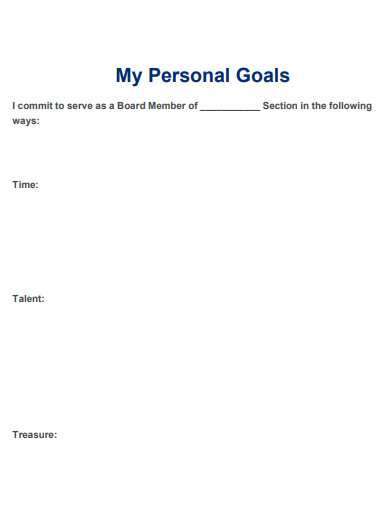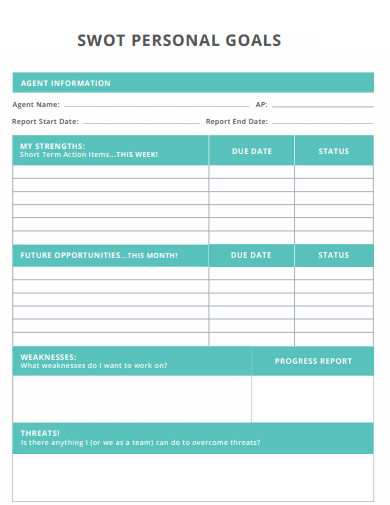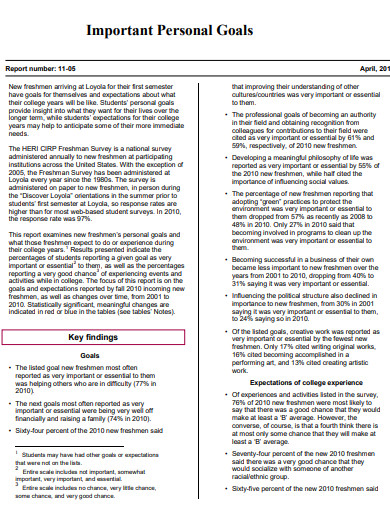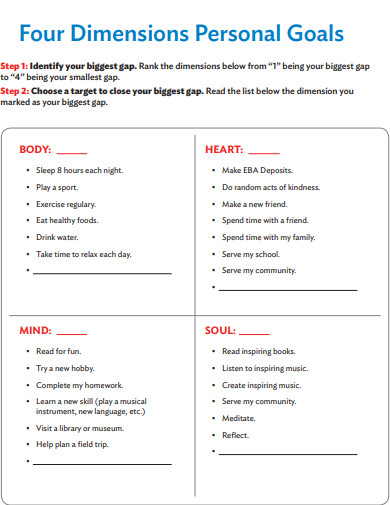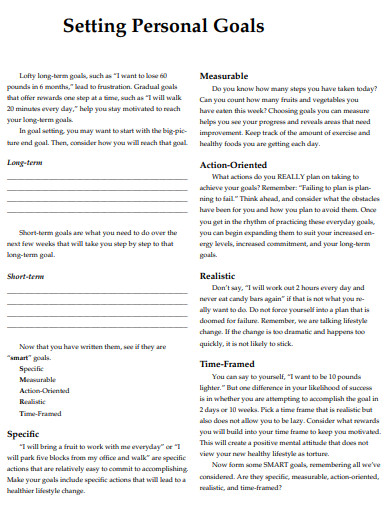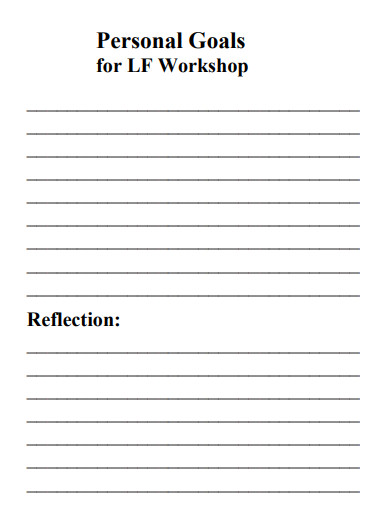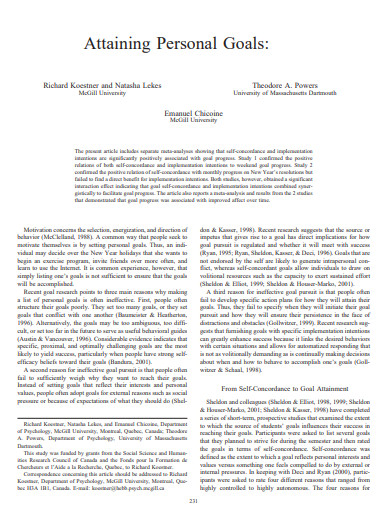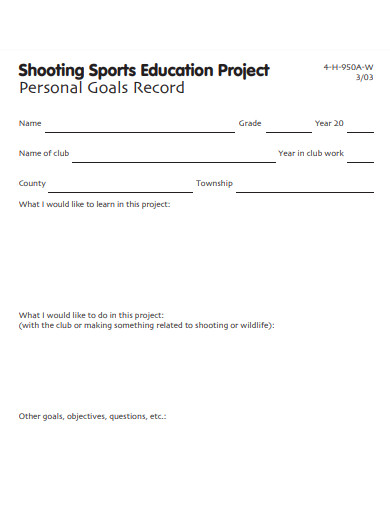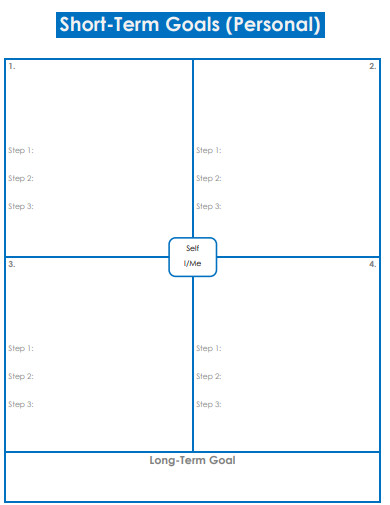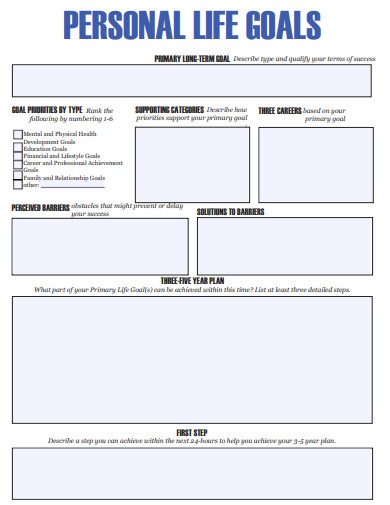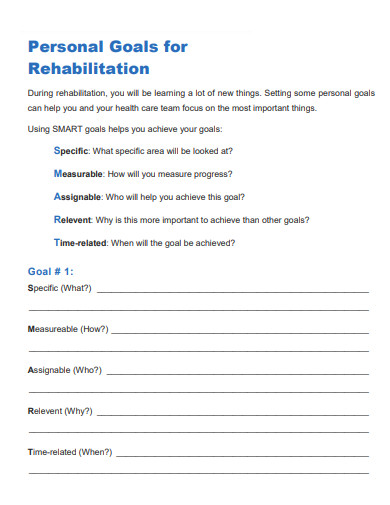Goals are the ideas and results you have in mind for the future and want to reach. You can reach your goals if you set deadlines and keep track of your work. Setting goals is a great way to make yourself a better person and a better worker. It’s important to track your progress and make sure you’re reaching your goals. As you reach more goals, you’ll see yourself improve and grow in both your personal and professional life. How do you make sure you’re on track? Of course, with a tracker! With our help, you can make a great one. In this article, we give you free, ready-made Goal Tracker samples in PDF and DOC formats that you can use to your advantage. Continue reading to learn more!
10+ Personal Goals Samples
1. Personal Goals
2. SWOT Personal Goals
3. Important Personal Goals
4. Four Dimensions Personal Goals
5. Setting Personal Goals
6. Personal Goals for Workshop
7. Attaining Personal Goals
8. Personal Goals Record
9. Short-Term Personal Goals
10. Personal Life Goals
11. Personal Goals for Rehabilitation
What Is a Personal Goal Tracker?
A goal tracker gives you a big-picture view of your priorities at any time of the year. It can be used to make sure that daily tasks are in line with the most important goals, to track progress, and to change goals when things change. After goals have been set, it’s important to keep track of their progress. When you keep track of your goals, it’s easy to see if everything is going as planned. Goal tracking can also help you get clear on your ideas, focus your efforts, make the best use of your time and resources, and figure out how likely you are to reach your goals.
How To Write a Personal Goal Tracker
Tracking your goals will help you keep an eye on how you’re doing and help you figure out what you can do to make each milestone more successful. A Goal Tracker Template can give you the structure you need to make sure that your tracker is well-organized and strong. You can do this by picking one of our excellent templates from the list above. If you want to write it yourself, you can follow these steps:
- Make a list of all your objectives
Use your computer, phone, or pen and paper to write down all of your goals. Think about what you want to achieve in the next few months or years. Make a list of your goals and arrange them in order of how important they are to you. Look over your notes and make detailed bullet points for each goal to help you organize them. - Create little tasks to assist you in achieving each objective
Check your list of goals to see which ones can be split up into smaller tasks. If you want to get a promotion, for example, one of your smaller goals could be to beat your monthly goals, get an online certification to improve your leadership skills, or ask your boss if you can take on more responsibilities. When each goal is broken down into smaller tasks, it becomes easier to reach. - Set realistic timeframes for your objectives
Once you’ve written down each job and goal, you can set due dates for them. Make sure you give yourself enough time to meet every deadline. To give yourself enough time to reach each goal’s deadline, try to think about other work or personal things that may take up some of your time. - Make a system of rewards for yourself
Set up a system of rewards for yourself. Look at your goals and tasks and decide what you’ll do for a reward when you reach each one. This gives you the extra push and motivation you need to move forward and reach your goals. It also gives you a goal to work toward.
FAQ
What are two commonly used strategies for keeping track of progress?
There are two widely used strategies for keeping track of progress. The first step is to establish proximal and distal objectives. Short-term or subgoals are basic goals, whereas long-term or primary objectives are peripheral goals.
Which five SMART goals are there?
The term SMART denotes a method for accomplishing any goal. SMART goals are those that are Specific, Measurable, Achievable, Realistic, and Time-bound.
Why is it critical to keep track of your objectives?
When we track, we may concentrate on the most critical tasks that we must complete in order to go in the proper way. This reduces the danger that might obstruct the achievement of goals.
It’s important to hold yourself accountable and check in on how you’re doing with your goals often. With a goal tracker, you can see and organize your tasks in a way that looks good and works well. To help you get started, you can download our complete Goal Tracker samples that are easy to change.
Related Posts
FREE 10+ Personal Leadership Development Plan Samples in PDF ...
FREE 11+ Personal Plan Samples & Templates in PDF Google ...
FREEE 10+ Goal Tracker Samples in PDF MS Word
FREE 10+ Issue Tracker Samples in PDF MS Word
FREE 8+ Sample Personal Statement For Graduate School in MS ...
FREE 3+ Individual Employee Training Plan Samples in PDF MS ...
FREE 10+ Professional Goal Statement Samples in PDF DOC
FREE 10+ Personal Mission Statement Samples in PDF MS Word
FREE 7+ Goals Mindmap Samples in PDF
FREE 10+ Statement of Purpose for Grad School Samples ...
FREE 10+ Goals Roadmap Samples in MS Word MS Excel ...
FREE 10+ Goal Statement for Graduate Samples in PDF
FREE 3+ Sales Team Action Plan Samples in PDF MS Word ...
FREE 10+ Coaching Action Plan Samples [ Health, Life, Career ]
FREE 10+ Development Action Plan Samples [ Leadership ...

